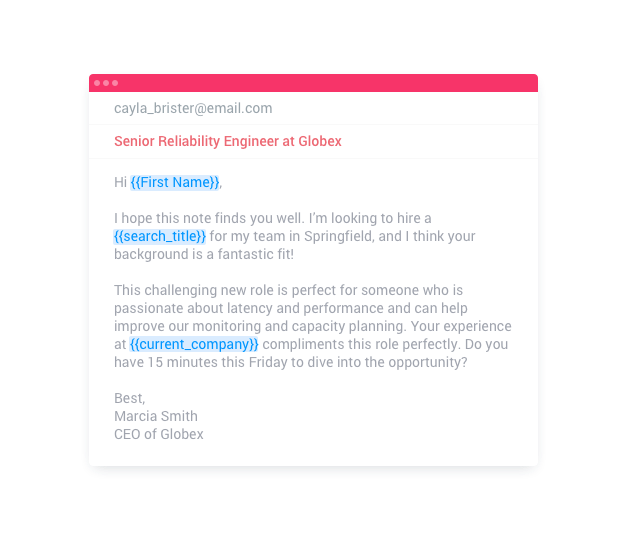Fetcher, a startup that promises to make the recruiting process easier while also diversifying the candidate pool, is announcing that it has raised $6.5 million in Series A funding.
Original known as Scout, the New York startup was founded by CEO Andres Blank, CPO Chris Calmeyn and engineering directors Javier Castiarena and Santi Aimetta.
Blank told me that Fetcher automates parts of recruiters’ jobs, namely finding job candidates and sending the initial outreach emails. When I wondered whether that just leads to more spammy recruiting messages, he said that Fetcher emails actually result in “a very good response rate” because they’re targeted at the right candidates.
“The reality is that if you’re looking for a job, you don’t need an email to be so amazing,
and if you’re a recruiter, you don’t want to spend 10 minutes thinking about what to write to each candidate,” he said.
He also described Fetcher’s approach as a “human in the loop” approach. Yes, the initial outreach is automated, but then the recruiter handles the conversations with candidates who respond.

Image Credits: Fetcher
“By automating both the sourcing [and] outreach sides of recruiting, Fetcher reduces the amount of time a recruiter spends in front of a computer searching for candidates, making a recruiter’s job more balanced, strategic and impactful, all while continuing to build a robust, diverse pipeline for the company,” Blank wrote in a follow-up email.
He also suggested that automated sourcing allows recruiters to reach a much more diverse candidate pool than they would through traditional methods. For example, he sent me a case study in which Fetcher helped video collaboration startup Frame.io hire 11 new employees in less than 12 months, nine of whom were women and/or underrepresented minorities.
“Fetcher has freed up time and given us the capacity to diversify our pipeline more
organically,” said Anna Chalon, Frame.io’s senior director of talent and diversity, equity and inclusion, in a statement. “This has allowed us to make some incredible hires, mostly from underrepresented groups, over the last year.”
Blank added that after Fetcher has seen its revenue increase every month since July of last year, owing to shrinking recruiting teams needing to be able to do more with fewer resources, as well as a greater corporate focus on the aforementioned diversity, equity and inclusion.
Fetcher has now raised a total of $12 million. The Series A was led by G20 Ventures, with participation from KFund, Slow Ventures and Accomplice. Blank said he’s planning to double the employee count (currently 80) by the end of the year and to build out additional analytics (including diversity analytics) and CRM tools.

 After that, we’ll start to come up with a
After that, we’ll start to come up with a